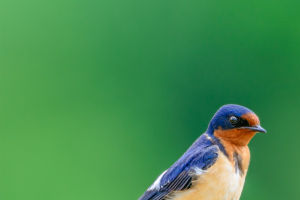Globe Amaranth is a plant native to tropical America.
Due to its strong drought tolerance, wide adaptability, long flowering period, and rich colors, it has gradually become an important member of the horticultural community worldwide.
The flowers of Globe Amaranth are small, densely clustered, and spherical, resembling a ball of wool. Its name derives from its globe-like shape and vibrant, long-lasting blooms. This plant is not only ornamental but also holds medicinal and symbolic significance.
The Globe Amaranth plant typically grows to about 30 to 60 cm in height, with upright stems and many branches. The leaves are oval or lance-shaped, usually covered with fine, soft hairs. The flowers bloom in dense clusters at the top of the stem, forming a spherical inflorescence.
The variety of flower colors—purple, pink, white, red, and more—are bright and enduring, making Globe Amaranth a popular choice in courtyards and flower beds. It is often used as material for bouquets and dried flower arrangements.
The cultivation of Globe Amaranth is relatively simple, and it thrives in various climatic conditions. It is drought-tolerant, thrives in poor soils, and requires ample sunlight to grow well. With sufficient sunlight, it can flourish in many environments.
In warmer climates, Globe Amaranth can bloom almost year-round, earning it the nickname "vitality star" of the garden. Its vibrant blooms add a splash of color to any space. The plant's hardiness also makes it ideal for novice gardeners, as its seeds germinate easily and are resistant to many pests and diseases.
Beyond its decorative uses, Globe Amaranth has a long history of medicinal application. Traditional Chinese medicine regards it as a remedy for clearing heat, detoxifying the body, relieving coughs and asthma, and soothing sore throats and swelling.
As a result, it has been used as a herbal treatment for symptoms such as sore throats, coughs, and asthma.
Modern pharmacological research has shown that Globe Amaranth is rich in antioxidants and possesses anti-inflammatory, antibacterial, and anticancer properties.
Furthermore, it is often consumed as a tea, especially in some Southeast Asian countries, where the dried flowers are brewed for their refreshing and thirst-quenching qualities. The tea, which has a beautiful color, is believed to have cooling properties and is used to clear the mind.
From a botanical perspective, Globe Amaranth belongs to the Amaranthaceae family. Like many other drought-resistant and adaptable plants, it has a high degree of ecological adaptability.
Its well-developed root system penetrates deep into the soil to absorb water and nutrients, allowing it to survive in challenging environments.
Additionally, the compact inflorescence structure and high seed production of Globe Amaranth allow it to propagate easily. Its ability to self-sow contributes to its rapid reproduction and distribution.
Despite its reproductive success, Globe Amaranth does not pose a threat to local ecosystems like some invasive species. On the contrary, it attracts pollinators such as butterflies and bees, contributing to the ecological balance.
In garden design, Globe Amaranth is often used to create colorful flower borders or as an edging plant. Its modest height and compact, bright flowers make it ideal for combination planting with other flowers. Even after its growing period, the flowers retain their decorative appeal as dried flower materials.
Once harvested, the flowers can be easily dried and preserved, maintaining their color and shape for extended periods. This quality makes them a popular choice for creating dried flower art, such as wreaths and bouquets.
Globe Amaranth also has economic value. In some regions, it is cultivated as a significant commercial flower. This is especially true in Southeast Asian countries, where there is strong market demand for dried Globe Amaranth.
It is purchased not only for decoration but also for use in tea and medicine production. Its resistance to deterioration during storage also makes it suitable for transportation, helping it secure a place in the international flower market.
As a plant with a distinctive appearance, long-lasting blooms, and diverse uses, Globe Amaranth has transcended its role as a mere ornamental plant. Whether in gardening, medicine, or cultural symbolism, it plays an important role.
As people's understanding of this plant grows, this small, spherical flower will likely take on an even more significant role in future gardening and health-related fields.


